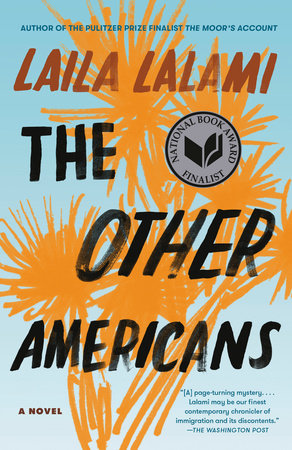The Other Americans Reader’s Guide
By Laila Lalami


1. The Other Americans explores themes of immigration, community, and identity. Discuss each of these topics with relation to The Other Americans. How is it a novel of immigration? And community? How do these connect to identity?
2. How is The Other Americans a novel about storytelling and the importance of stories, everyone’s stories? And the importance of telling and listening to stories?
3. Why do you think Lalami tells this story using many different voices and writing in the first person for each voice? And why does she turn to the second person for Salma’s chapter? How does this affect your reading? How do you relate to the various characters?
4. Nora is a composer who loves music and sees music as colors. How does this affect how she views the world and interacts with other? Do you think she is more sensitive than other people?
5. Throughout much of the novel, Jeremy is filled with nostalgia for Nora in high school. She was kind to him after his mother died and his father fell apart. Compare and contrast the Jeremy in high school with Jeremy the ex-Marine and policeman.
6. Both Jeremy and his friend Fierro fought in Iraq. How do they separately deal with the trauma from that time? How does it affect their relationships with women and with each other? Do you think Fierro will ever recover from fighting in the war?
7. How is A. J.’s voice and story important to the novel? How do his bullying and racist comments connect with his fierce devotion to dogs and to his mother?
8. “Lalami captures the complex ways humans can be strangers not just outside their ‘tribes’ but within them, as well as to themselves.”(Publishers Weekly, starred review) How has Nora been a stranger to herself? Is it because, as her mother says, she has her “head in the clouds” (p. 17)? Why does she have a tattoo on her wrist reading “a voice crying out” (p. 93)? Has she been running away from herself and chasing something that isn’t necessarily what she needs/wants? How does she find her way home?
9. Nora’s mother, Maryam, moves to the United States from Morocco, away from her parents and extended family, and feels “it was like being orphaned” (p. 31). In the United States, she says, “All I ever wanted was to keep my family together.” (p. 79). How does Maryam keep the family together and the family narrative intact?
10. How does Nora’s relationship with her mother evolve over the course of the novel? Why?
11. “How strange the work of memory . . . what some people remembered and others forgot.” (p. 138) Comment on this quote in relation to the novel as a whole.
12. Everyone in the novel is an outsider in some way. How? Discuss each of the characters and their place as outsider or “other,” whether it is by race, religion, or class.
13. How is this a general tale of our time and a story specific to its place, Southern California? Describe the setting. How does nature (and in particular the Mojave Desert and the Joshua Tree National Park), play a part in the novel?
14. The Other Americans begins with a death and ends, in a way, with a birth and a rebirth. Why do you think Lalami has ended her novel with a pregnant Nora?
15. “Home was wide-open spaces, pristine light, silence that wasn’t quite silence. Home, above all, was the people who loved me.” (p. 301) How does this novel revolve around home? Noticing home, returning home, discovering home, creating home? Discuss several of the characters’ relationships to home. How are Nora’s and her mother’s connection to home both similar and different? How about Coleman’s and Efraín’s? And how about Jeremy and Fierro?
16. Despite both being immigrants, how and why are Driss’s and Efraín’s lives and roles in the town different?
17. The love story between Nora and Jeremy is central to the novel. What does it take for Nora to open up to his love and to accept her love for him?
18. Discuss the differences between the two Guerraoui sisters. What are their similarities and differences? How have their lives taken different paths since graduating from high school and leaving home: where and how they live, what professions they have, what kind of partner they gravitate toward?
19. “Stories help us see the world through the eyes of others: We see what they see; we’re provoked or inspired or amused; we take sides or withhold judgment—but in the end, we find order in disorder. We make sense of the world around us through the language of stories. Reading fiction also allows us to expand the limits of our imagination and helps us develop empathy—qualities that seem to be in short supply at the moment.” (Laila Lalami in an essay in The Nation) How does this quote from Lalami dovetail with this novel? How has reading this novel (or fiction in general) opened your eyes or helped you develop empathy?
Just for joining you’ll get personalized recommendations on your dashboard daily and features only for members.
Find Out More Join Now Sign In